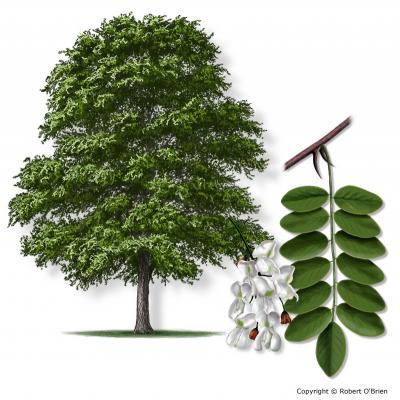Locust, Black
Description
Spiny medium-sized tree 50 feet high, with forking, slightly angled trunk and irregular open crown of upright branches. Scattered to common in moist to dry sandy and rocky slopes of mountains, in open areas forming thickets from root sprouts. Black locusts are popular trees for shade and ornament, shelterbelts, wildlife, and erosion control. Planted also along old fields and lands strip-mined for coal. The flowers of black locust produce good honey.
-
Price:
$1.00
- SKU: 2
- Type: Hardwood
- Hardiness Zones: 4, 5, 6, 7, 8, 9, 10
- Moisture Zones: All, but Panhandle
- Soil Type: Acidic, All, Clay, Dry, Moist, Moist to Alkaline, Moist, Well Drained, Most, Silt, Wet
- Windbreak: Good
- Erosion Control: Superior
- Wildlife: Good
- Product Type: Bare-Root Seedlings
In stock
USDA Hardiness Zones
The primary guide to determine plant hardiness is the USDA Hardiness Zone Map, which divides the United States into ten zones based on average minimum temperatures. Each zone is then subdivided into A and B sections. A plant is said to be hardy if it can tolerate the lowest average winter temperature that occurs in a zone. Hardiness is affected by duration and intensity of sunlight; amount and timing of rainfall; length and severity of summer drought; soil characteristics; slope; frost occurrence; humidity; and cultural practices.
For more information or questions contact your nearest forester for advice.

